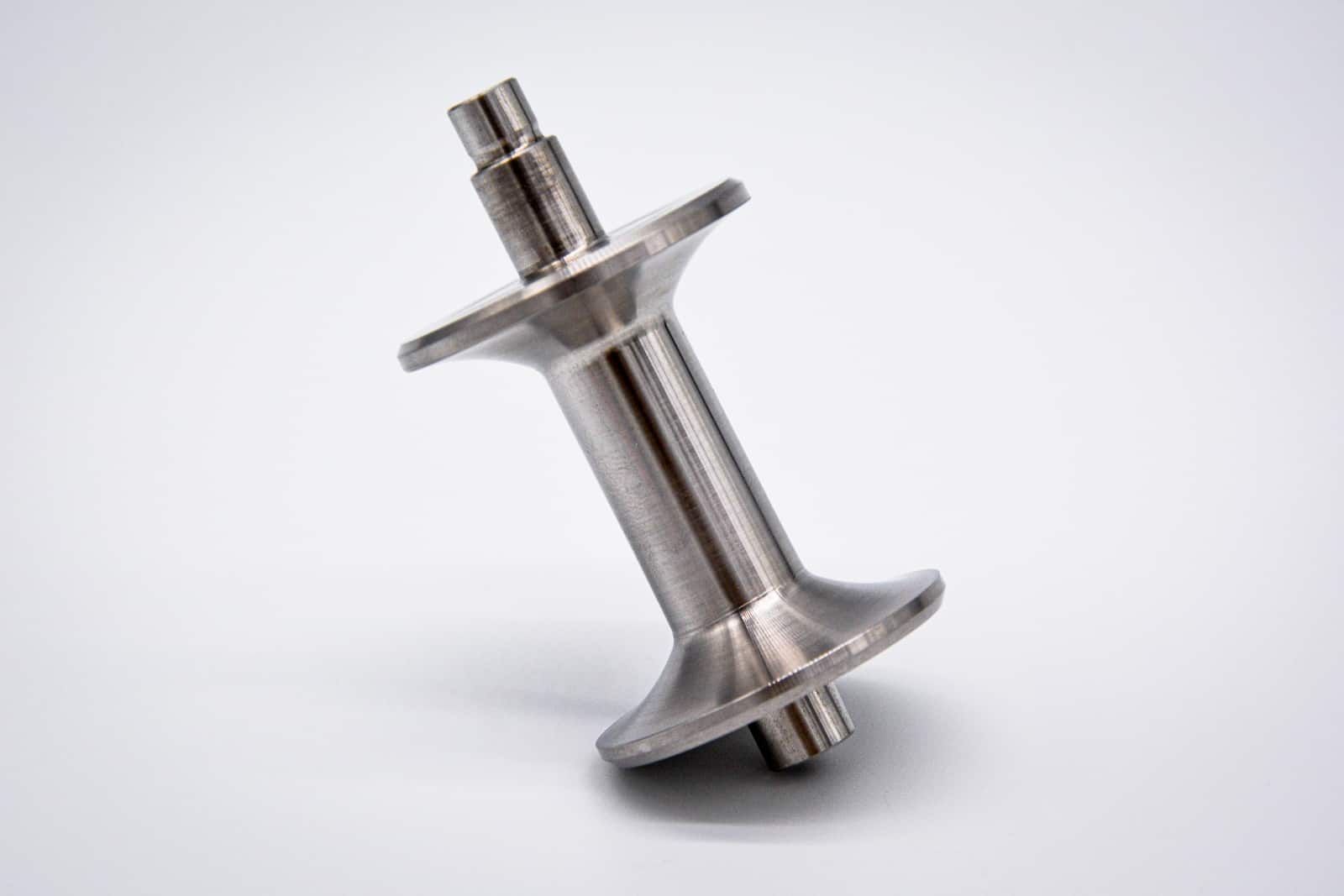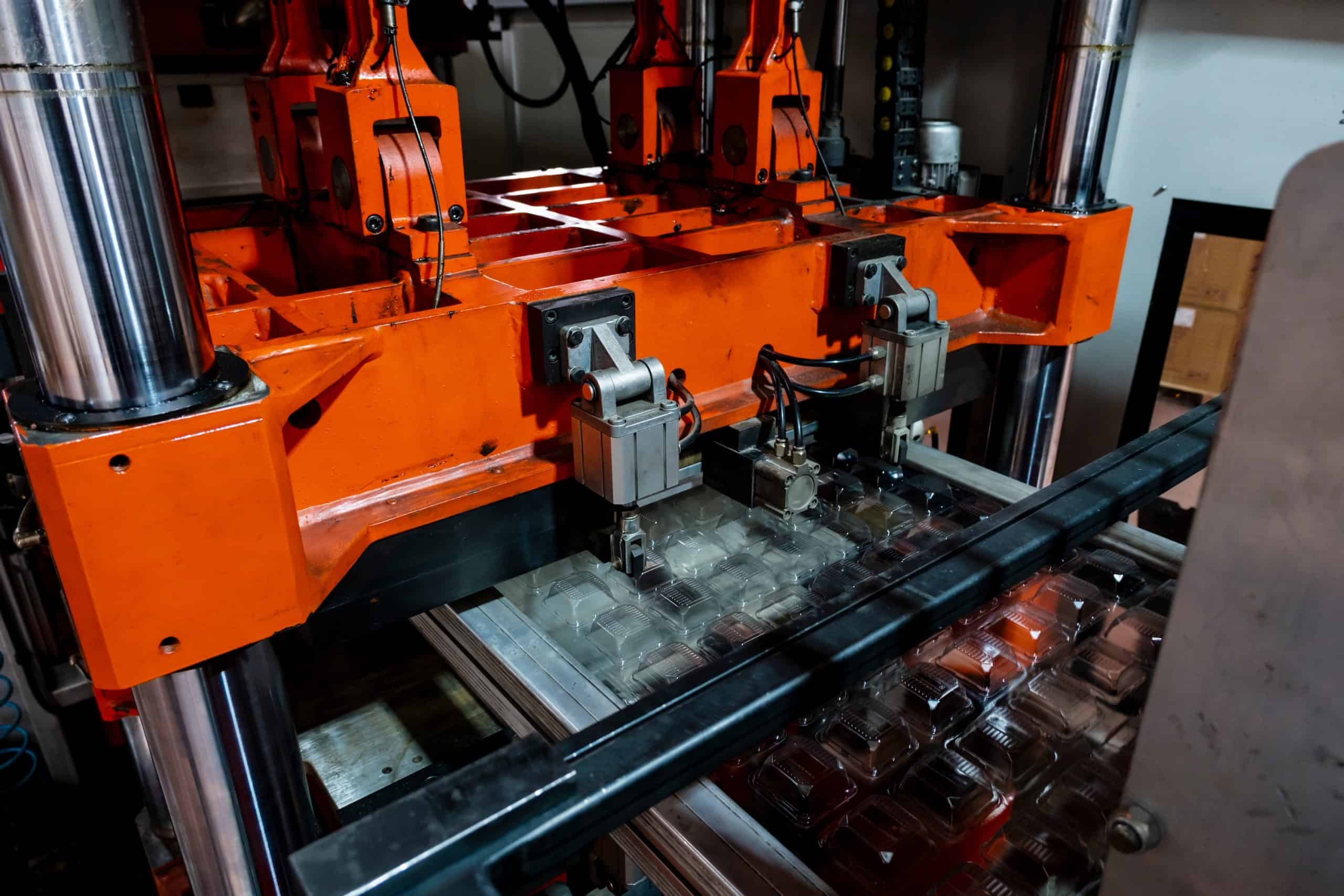Blow moulding is a pivotal way to make plastic items. It’s known for making a wide variety of products, from regular bottles to special parts for specific industries. As technologies advance and the push for sustainability grows, this manufacturing process is poised to be a trendsetter. Its relevance, adaptability, and promise to highlight its integral role both today and in times to come.
The blow moulding process is particularly favoured for producing high volumes of thin-walled plastic items, be it everyday bottles or protective casings for consumer goods.
What is Blow Moulding?
Blow moulding stands out as a predominant method in the vast arena of plastics manufacturing. This technique’s primary function? Craft hollow plastic items.
The procedure is straightforward: an extruded plastic tube inflates, taking the precise shape of a predefined mould. Although various thermoplastics and thermoset polymers suit this method, HDPE, or high-density polyethene, often emerges as the preferred choice for practitioners in the field.
There are two main types of blow moulding: injection and extrusion. Both have their unique uses but share some great benefits, like shaping parts with intricate designs, coupled with swift production speeds and economical tooling expenditures.
How Does Blow Moulding Work?
Blow moulding, a vital method in plastic fabrication, seamlessly translates polymer tubes into hollow objects. This complex yet efficient procedure can be dissected into four core stages. Let’s delve into each stage to unravel the intricacies of the blow moulding machine and its operations.

Step 1 – Material Selection and Preparation
Before kickstarting the process of blow moulding, the initial step revolves around selecting the suitable polymer. This polymer acts as the foundation of the final product.
It’s crucial to ensure its quality and compatibility with the intended product’s purpose. Once chosen, this material undergoes thorough preparation, priming it for the subsequent stages.
Step 2 – Formation of the Parison or Preform
After the plastic material preparation, the polymer is subjected to heat until it attains a malleable state. This heated polymer is then moulded to craft a closed-end tube, commonly referred to as the parison or preform.
This thick tube forms the initial shape, providing a base structure that the blow mould machine will subsequently modify to achieve the final design.
Step 3 – Blowing Process
With the parison held firmly between two mould halves, the real magic unfolds. Pressurised air is swiftly injected into this preform. This action causes the tube to inflate, compelling it to align with the mould’s contours. The desired shape is meticulously crafted to match the intricacies of the mould’s design.
Step 4 – Cooling and Ejection
Once the inflated polymer snugly fits the mould, the cooling process commences. At this stage, a core rod is introduced to assist in maintaining the desired shape. The core rod helps regulate the temperature, ensuring that the newly formed shape solidifies without any distortions.
Upon reaching an optimal cooled state, the product is gently ejected from the blow mould machine. The finishing touch involves trimming off the excess plastic, especially around the area where the air injection occurred. This final step guarantees a polished and refined end product.
Types of Blow Moulding
Blow moulding is a key process in making plastic products, and it comes in different types.
Injection Blow Moulding
Injection blow moulding combines the principles of traditional injection and blow moulding. The journey begins with molten plastic being injected onto a metal rod within a mould, crafting the preliminary preform.
Post this, the preform, accompanied by the rod, ventures into another mould that mirrors the final product’s shape. Injecting compressed air transforms the preform to mirror the mould.
Boasting higher precision, especially around the product’s neck, this method predominantly uses materials such as HDPE, PET, PP, and nylon. It’s renowned for crafting items ranging from beverage containers to intricate storage tanks.

Extrusion Blow Moulding
Distinct from its injection counterpart, this technique pivots around extruding the hollow preform. After sealing one end, compressed air breathes life into the preform, transforming it to fit the mould’s contours.
Once moulded, the product undergoes cooling and ejection. The technique is divided into continuous and intermittent extrusion blow moulding, each with unique characteristics.
Commonly crafted items encompass water bottles, automotive components, and gardening tools. Notable materials here include HDPE, PP, and nylon.

Stretch Blow Moulding
Sometimes viewed as a subset of injection blow moulding, this process introduces an additional step: stretching. Post the preform’s creation; a rod stretches it to predefined dimensions, after which inflation crafts the end product.
This elongation enhances the product’s mechanical robustness. Whether executed as a one-stage or two-stage process, materials like HDPE, PP, ABS, and nylon often find their way into the stretch blow moulding technique.

Advantages of Blow Moulding
Blow moulding, over the years, has carved a unique niche within the manufacturing sphere. Beyond the immediate visibility of its products, it’s the fundamental advantages of the process that truly make it stand out. Delving deeper, three core benefits emerge, cementing its value in modern manufacturing:
- High-Efficiency Production: Blow moulding emerges as a frontrunner when volume and speed are paramount. Tailored for crafting large quantities swiftly, its automated nature minimises the need for constant human intervention. Unlike traditional injection moulding, which may necessitate multiple processes and assemblies for hollow parts, blow moulding transforms raw plastic pellets into finished items directly and seamlessly.
- Design Versatility: An often-underrated merit of blow moulding is its adeptness in forming intricate geometric designs. Regular injection moulding processes often fail when tasked with crafting hollow components like bottles due to tooling restrictions. However, blow moulding, with its custom capabilities, effortlessly crafts such items, even when their shapes are complex, showcasing its unparalleled design flexibility.
- Economical Tooling: Cost often emerges as a decisive factor in manufacturing. Here, blow moulding shines with its cost-effective tooling, especially in extrusion blow moulding. The lower pressures employed in the moulding process mean reduced tooling expenses, presenting a cost-efficient alternative to traditional methods. This cost advantage, even in large-scale production, elevates blow moulding as a preferred choice for manufacturers, ensuring affordability without curtailing quality.

Limitations and Challenges of Blow Moulding
While blow moulding offers many benefits, it’s essential to approach the method with a comprehensive understanding, including its limitations and challenges. A few critical areas where blow moulding faces potential hurdles.
- Material Wastage Concerns: Blow moulding, in its process of crafting hollow plastic items, sometimes produces excess material, particularly in the form of flash or trimmings. This excess, if not recycled or repurposed, contributes to material wastage. It’s an aspect that manufacturers can carefully navigate, ensuring efficient use of raw materials while minimising unnecessary waste.
- Constraints in Material Selection: While blow moulding is compatible with a range of thermoplastics and thermoset polymers, not all materials are equally suited. Certain polymers might not provide the desired finish or strength, especially when crafting products with specific requirements. Such limitations can sometimes curtail design flexibility or necessitate a shift towards alternative manufacturing techniques.
- Equipment Expenditure and Upkeep: The sophisticated nature of blow moulding machinery demands significant capital investment. These machines, equipped with intricate components, require regular maintenance to ensure consistent performance and product quality. Furthermore, should a part malfunction or wear out, replacements or repairs can prove costly, affecting overall operational costs.
What is Blow Moulding Used for?
Blow moulding has gathered widespread adoption across various sectors. Its versatility in crafting a multitude of products positions it as a preferred choice for many manufacturers. Here’s a closer look at some of its key applications across industries.
- Food and Beverage Sector: Undoubtedly, one of the most prominent benefactors of blow moulding is the food and beverage industry. Essential items such as plastic bottles, milk jugs, and an array of food containers are manufactured using this method. These products, often seen in our daily lives, underscore the critical role blow moulding plays in packaging.
- Pharmaceutical Realm: Safety and hygiene are paramount in pharmaceuticals, and blow moulding stands as a reliable ally. The industry widely employs this technique to craft pill bottles, ensuring medications remain secure and uncontaminated.
- Automotive Industry: Vehicles house an intricate array of components, many of which are manufactured from blow moulding. From fluid reservoirs and protective mudguards to air ducts, this moulding process ensures durability and precision. Additionally, containers for motor oil and other automotive fluids are commonly produced using this technique.
- Cosmetic and Personal Care Sector: The cosmetic industry also finds value in blow moulding. Essential items like shampoo and lotion bottles, as well as casings for various beauty products, are crafted using this method. This ensures not only functionality but also an aesthetic appeal aligning with brand identities.
- Waste Management and Storage: Beyond the glamour of cosmetics or the utility of the automotive world, blow moulding serves practical needs as well. It aids in creating robust garbage bins, diverse storage containers, and even large barrels, showcasing its adaptability.

Blow Moulding vs. Injection Moulding
Blow moulding, while prominent in its own right, often finds itself compared with other moulding techniques, particularly injection moulding. It’s vital to discover their unique attributes and understand when one might be more apt than the other.
| Attributes | Blow Moulding | Injection Moulding |
| Design Flexibility | • Ideal for hollow, container-like shapes • Limited to simple shapes and thin walls |
• High design flexibility for complex shapes • Supports intricate details and multiple material layers |
| Cost and Efficiency | • Lower tooling and equipment costs • Faster production for large quantities • Efficient for mass-producing simple parts |
• Higher initial tooling costs • More cost-effective for intricate, high-precision parts • Suitable for both small and large production runs |
| Precision and Finish | • Thicker walls and less precise details • Surface finish can be rough for some applications |
• Offers exceptional precision and intricate detailing • Smooth, high-quality surface finish • Preferred for parts where precision and aesthetics matter |
Order Production Parts at Xometry
In conclusion, blow moulding stands as a versatile and efficient manufacturing process, meeting the exacting demands of industries such as medical, automotive, aerospace, engineering, robotics, and food consumer industries. The ability to produce intricate, hollow shapes with precision is a testament to the capabilities of this method.
For businesses seeking reliable solutions for mid and high-volume production, Xometry offers blow moulding services that combine technical expertise with cutting-edge technology.
 Europe
Europe  Türkiye
Türkiye  United Kingdom
United Kingdom  Global
Global 

 Login with my Xometry account
Login with my Xometry account  0
0









Comment(0)